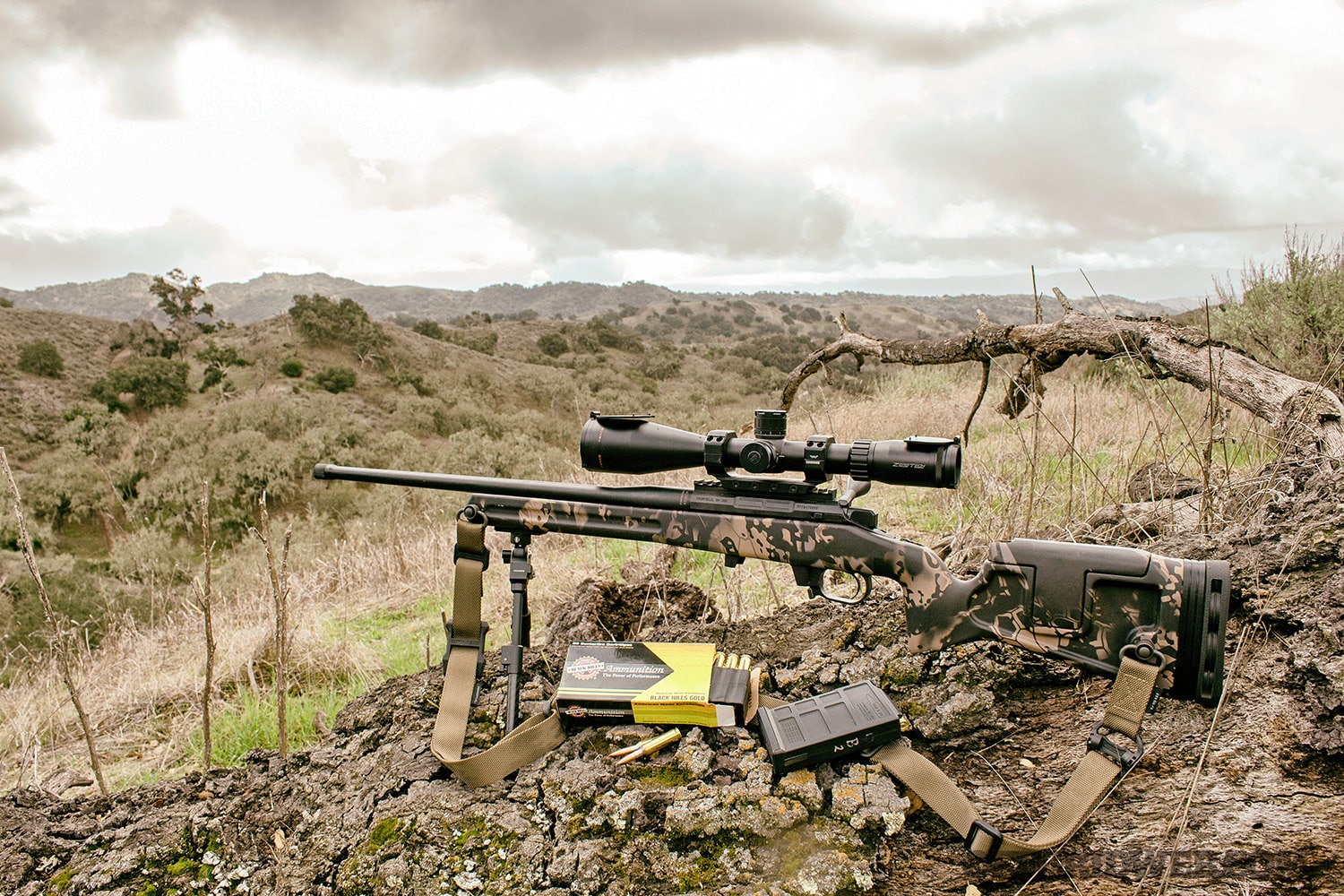Whenever you hear the time period “long-range capturing,” a number of issues may come to thoughts. Massive rifles, greater scopes, and possibly a contest shooter buried behind a metal barricade someplace within the American Southwest. What in all probability doesn’t come to thoughts is a winery in Southern California, a searching rifle, and a gaggle of down-to-earth individuals stretching their photographs from 250 out to 1,250 yards. However that’s precisely what Sensible Precision 101 turned out to be.
Hosted at a non-public ranch someplace in Southern California (for the privateness of the rancher and company, we’ll preserve the winery’s identify off the document), this two-day course was run by South Coast Lengthy Gunner, with Ryan Burns as the first teacher. Burns — backed by the ranch proprietor and his vary security officers — put collectively a category that didn’t require a competition-ready rifle or a physics diploma to observe. As a substitute, it was targeted on giving college students a working information of the ideas behind long-range capturing and serving to them discover the actual capabilities of their rifles.
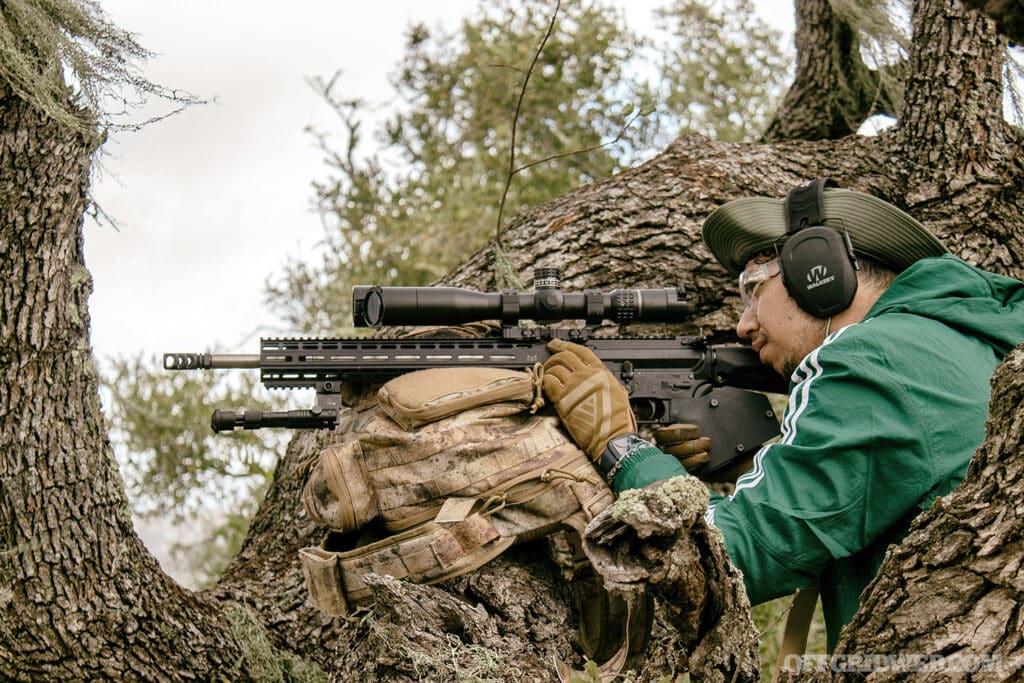
College students have been pressured to get artistic when it got here to establishing capturing positions.
A Grounded Begin
Like all good lengthy vary capturing course, we began with a security temporary. Burns made it clear that security was non-negotiable and walked everybody by means of the protocols for each particular person shooters and the firing line as an entire. With that squared away, we shifted focus to the primary actual job of the course: getting our rifles zeroed at 100 yards.

Subscribe Immediately and Save!
For many people, that’s the place our familiarity with our rifles started and ended. Burns challenged that proper off the bat. “Most of you’ve gotten been utilizing your rifles as 200-yard instruments,” he mentioned. “However they’re able to a lot extra.”
The remainder of the weekend would function proof of that. Day one was all about constructing the muse, which included zeroing the optics, understanding scope changes, and getting conversant in the mechanics of lengthy vary capturing. Day two would stretch that basis to the sting, with targets starting from 250 yards all the way in which out to 1,250.
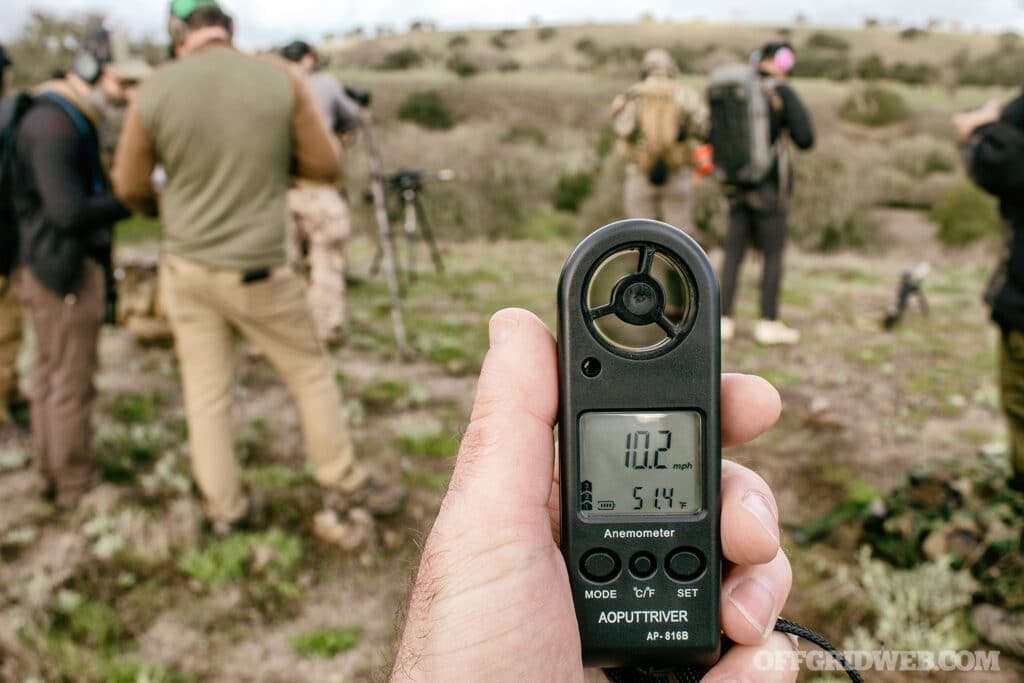
Particular instruments, like this cheap anemometer, have been used to exactly measure wind pace and air temperature.
Past the Muzzle
To know what it takes to hit targets lengthy vary capturing, we first needed to get our heads round what occurs between the muzzle and the goal. Burns laid it out merely, “Three issues have an effect on your bullet in flight: gravity, the setting, and time.”
Gravity pulls your bullet down the second it leaves the barrel. The setting encompasses wind, humidity, air strain, drag, and even the rotation of the earth, which all play a task in steering the bullet off target. Time makes each of these worse by compounding inaccuracies the additional it travels. The longer your bullet is in flight, the extra it drops and the extra the setting can mess with it.
Burns emphasised that we’re not on the mercy of these forces. We are able to quantify them, dial them into our scopes, and work with them. However to try this, we have to ditch the “set it and neglect it” method.
“Again within the day, individuals zeroed their scopes, put the caps again on, and by no means touched them once more,” Burns mentioned. “Now we’ve bought the instruments to regulate our optics dynamically by distance, by wind, by scenario.”
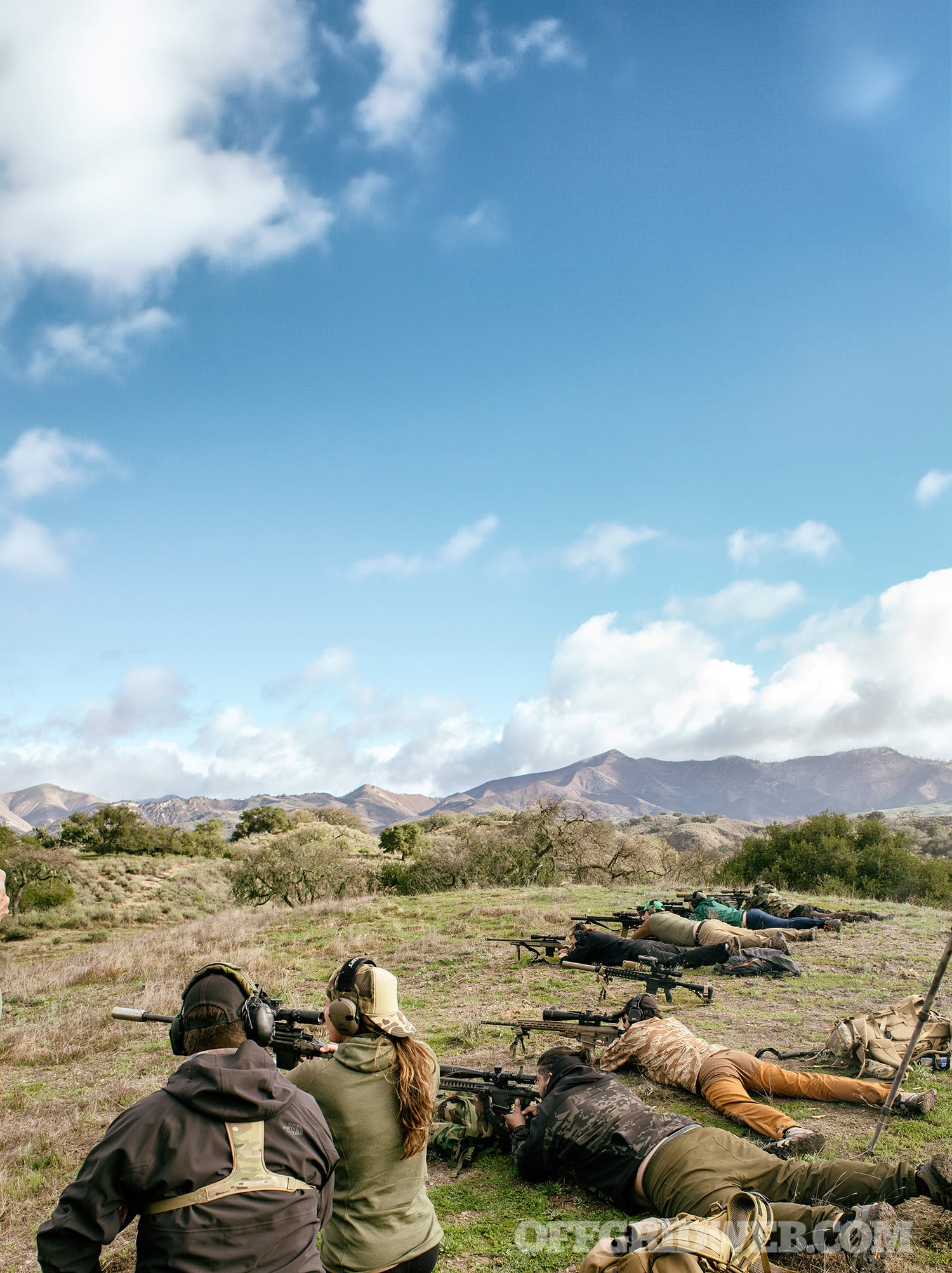
Shifting from hilltop to hilltop, college students needed to make photographs with elevated heartbeats and heavy respiratory.
MOA vs. Mils
One of many first technical conversations we bought into was about scope changes. Particularly, the distinction between MOA (minutes of angle) and Mils (milliradians). Most of us had in all probability used MOA earlier than with out totally understanding its limitations.
Right here’s the deal: MOA is an angular unit of measurement, the place 1 MOA equals roughly 1 inch at 100 yards. Most scopes regulate in 1/4 MOA increments, which works effectively in even-number eventualities. However once you’re attempting to compensate for odd numbers — like needing 7.3 inches of correction — it rapidly turns right into a math headache. Add in environmental elements and altering distances, and people fractions develop into a legal responsibility.
Mils, then again, are based mostly on the metric system, which is base 10, and the maths stays much more constant throughout distances. That makes Mils simpler to work with, particularly beneath strain or in less-than-ideal circumstances.

Lead teacher Ryan Burns observes the impacts of rounds being despatched down vary.
DOPE and Ballistics Apps
“DOPE” stands for Knowledge On Earlier Engagements, and earlier than smartphones and ballistic solvers, shooters used to maintain hand-written DOPE charts based mostly on their vary time. However these charts have been solely pretty much as good because the atmospheric circumstances they have been written beneath. Change elevation, temperature, or humidity, and your knowledge may collapse.
That’s the place apps like Utilized Ballistics and GeoBallistics are available in. Feed them good enter, akin to ammo kind, barrel size, and ballistic coefficient, they usually’ll offer you correct DOPE in your shot. The hot button is giving them the suitable knowledge.
An enormous a part of that knowledge contains understanding drag coefficients, particularly the distinction between G1 and G7. G1 is the older mannequin, designed for round-nosed or flat-based bullets like what you’d discover in a .22LR or 9mm. G7 applies to fashionable, boat-tailed, spire-point bullets like 6.5 Creedmoor or match-grade 5.56. These are much more aerodynamic. Consider G1 like a faculty bus and G7 like a Corvette.
The extra correct your ballistic coefficient entry is, and the higher you perceive what sort of bullet you’re capturing, the higher your app might be at doing the heavy lifting. That’s the science. However studying the wind? That’s the artwork.

No two firearms have been the identical, and we have been in a position to get a greater understanding of how completely different builds carried out.
Weaponizing Mirage
Burns launched us to a way that was new to many people: watching mirage. Mirage, or the shimmer you see rising off a sizzling floor, isn’t unique to abandon illusions. It’s a direct visible indicator of wind. When there’s little to no wind, mirage rises straight up. A slight lean (15 to 30 levels) means a 4- to 7-mph wind. Mirage at 45 levels suggests over 10 mph. When it begins flowing parallel to the bottom, you’re coping with over 15-mph wind.
Utilizing mirage to estimate wind pace, particularly by means of a recognizing scope or high-magnification optic, provides one other layer of management to the lengthy vary capturing course of. You’re not simply guessing anymore. You’re studying the setting in actual time.
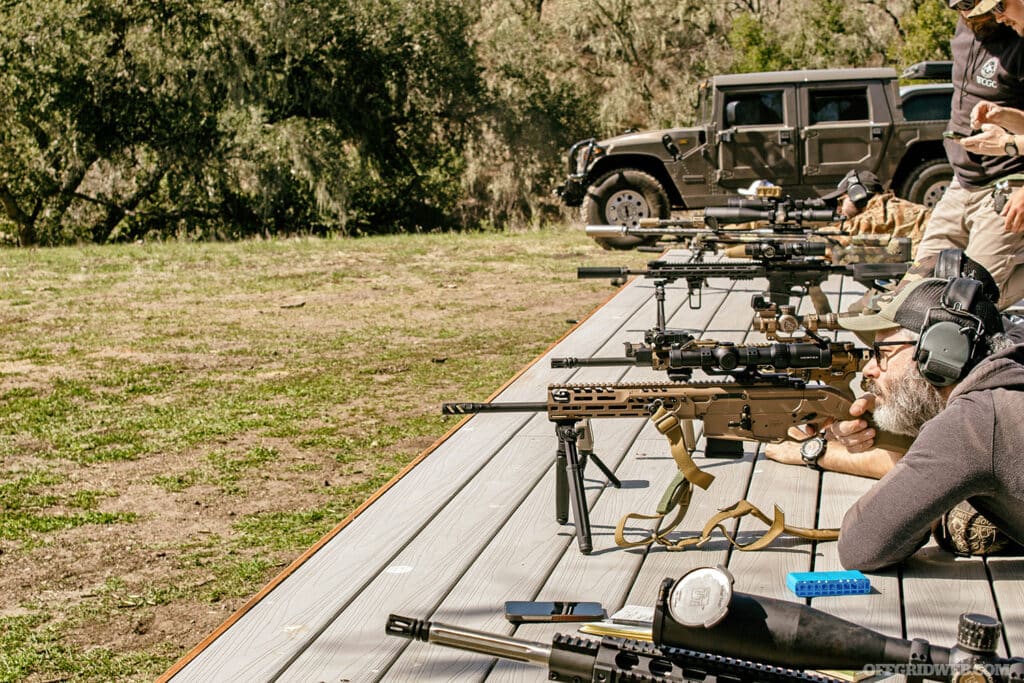
After the comparatively brief classroom portion, the remainder of the primary day was spent making certain our optics have been completely zeroed.
Place Issues In Lengthy Vary Capturing
In lengthy vary capturing, not all photographs come from a benchrest. Particularly within the searching world, your photographs usually tend to come from awkward terrain, hasty positions, and no matter assist you possibly can improvise. Burns walked us by means of positional capturing fundamentals. Just a few takeaways that caught:
• The extra of the rifle your physique is supporting, the much less secure the shot might be.
• Don’t power a place. In case you really feel pressure anyplace in your physique, it’ll present up within the shot.
• Keep away from “stacking joints,” like elbow joint instantly on knee joint. As a substitute, plant your elbow within the meat of your thigh for higher stability
• Level your toes and hips on the goal to sq. up your base.
He additionally emphasised the significance of recognizing your misses. “Don’t raise your head off the gun,” he advised us. “Hold the goal within the scope earlier than, throughout, and after the shot.” One trick he supplied was to carry the set off again after the shot breaks. Typically it helps preserve your eye behind the glass and prevents you from flinching away from recoil.
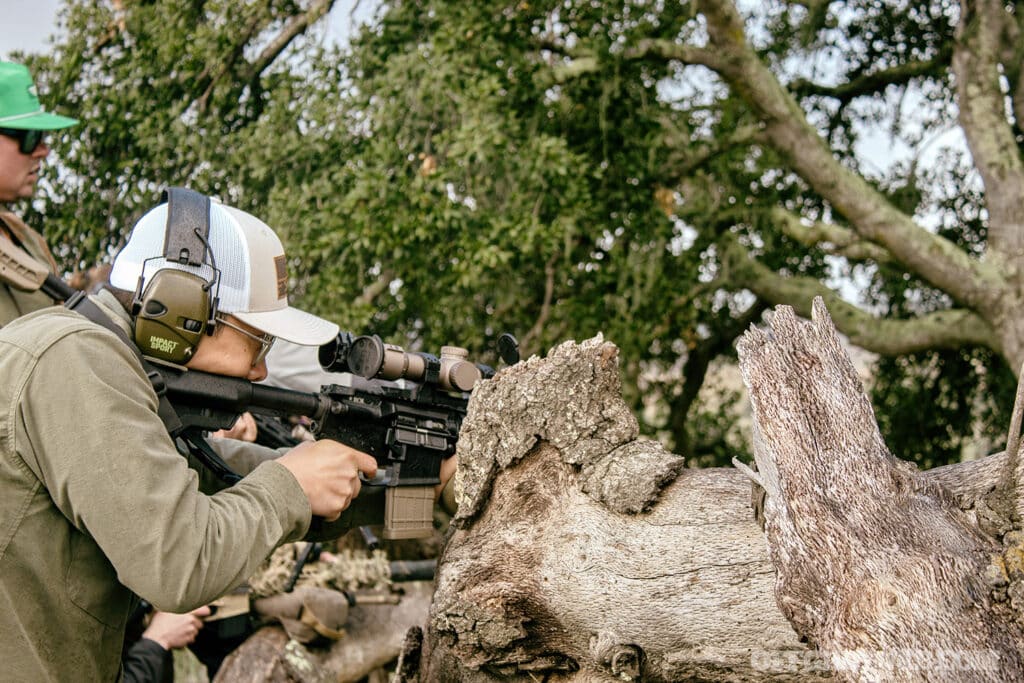
Logs and different particles made ample improvised firing positions.
When a Looking Rifle Is All You’ve Bought
I took the course with a light-weight searching rifle — a setup designed extra for carrying by means of brush than ringing metal plates at 1,000 yards. My scope had respectable readability however lacked excessive magnification. My barrel was shorter than what most precision shooters would choose. Principally, my gear wasn’t perfect for this sort of capturing. However that’s the place the course shined. As a substitute of punishing college students for his or her gear decisions, it taught them tips on how to take advantage of it.
As a result of my rifle was considerably lighter than the PRS-style rifles others introduced, I needed to pay shut consideration to my place. Recoil administration was tougher. Staying within the scope by means of the shot was tougher. However a number of the methods — like urgent the set off and holding it to the rear — helped quite a bit.
My greatest takeaway? Match-grade ammunition makes a distinction. Lengthy-range capturing is all about consistency, and consistency begins together with your ammo. When every thing else is held equal, small inconsistencies in ammo flip into large misses downrange.
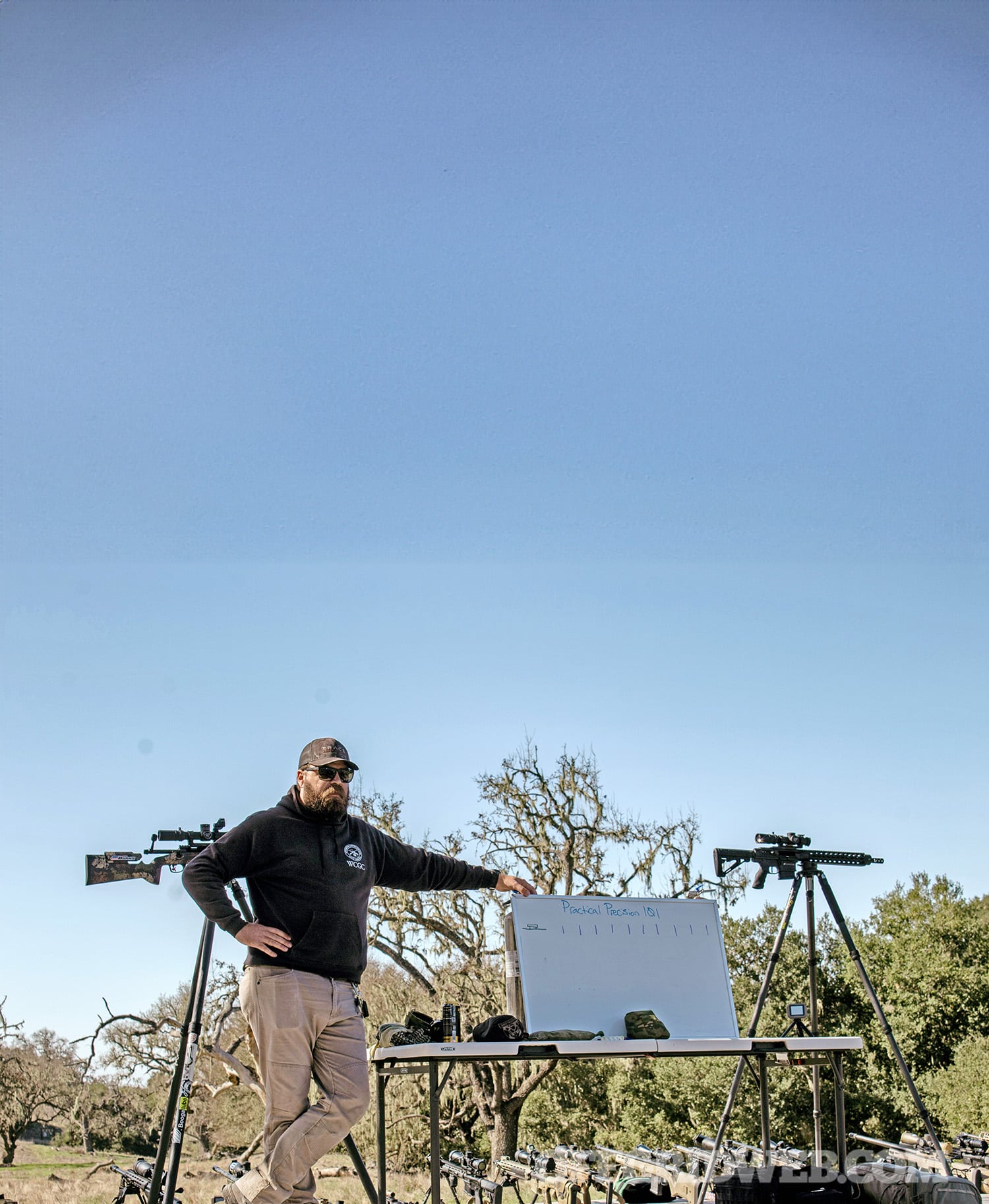
Closing Ideas
By the top of the weekend, we have been hitting metal out previous 1,000 yards — a few of us with rifles that had by no means been pushed previous 200. Greater than that, we walked away with a brand new degree of confidence, not simply in our tools however in our capability to make use of it.
Sensible Precision 101 lived as much as its identify. It was sensible in the very best sense of the phrase. Centered, grounded, and constructed for shooters who wish to make actual enhancements. Even in the event you’re working a high-end precision rifle or a bolt-action you’d use throughout deer season, the teachings apply. Burns and the South Coast Lengthy Gunner group gave us the instruments to push previous our personal perceived limits — one click on, one wind name, one set off press at a time.
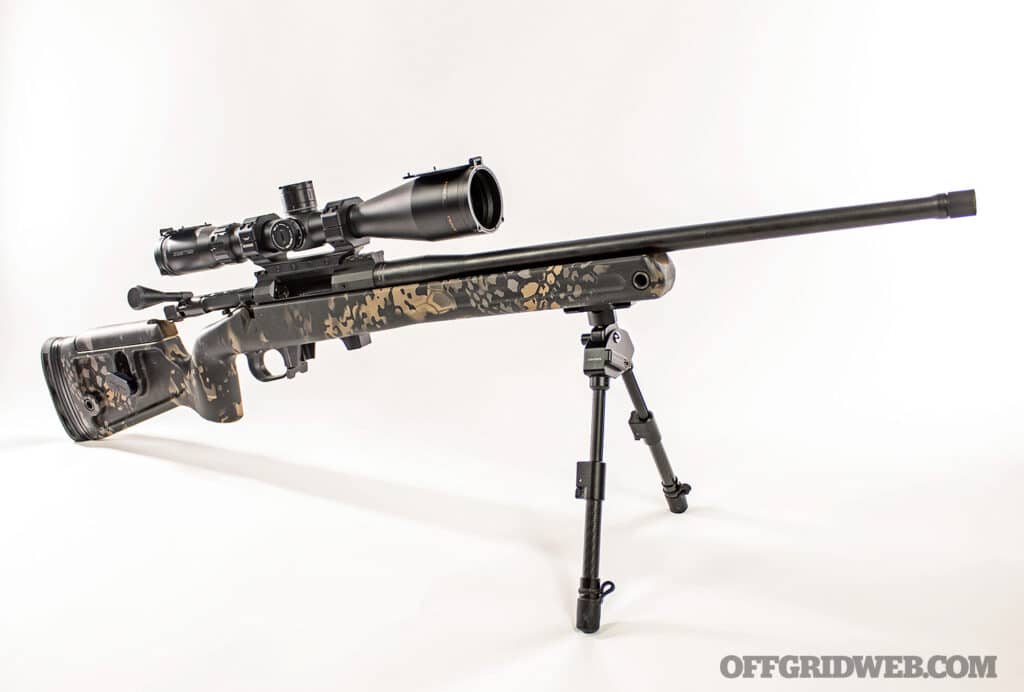
Construct Sheet
This can be a rifle I intend to make use of on future searching journeys. The lighter weight isn’t perfect for PRS-style aggressive capturing, however with the suitable approach, it’s nonetheless able to reaching out and touching targets 1,000 yards away and past
- MAKE & MODEL: Faxon FX7 – 20-inch 6.5 Creedmoor
- Inventory: Grayboe Phoenix 2
- Optic: ZeroTech 3-18X50mm LR Hunter MRAD
- Rings: Warne 1 PC Precision Mount 30mm
- Sling: Magpul MS1 QDM
- Bipod: Spartan Professional Hunt
- Ammo: Black Hills Ammunition – 147-Grain ELD Match
Learn Extra From Concern 68
Don’t miss important survival insights—join Recoil Offgrid’s free publication at the moment!
Try our different publications on the internet: Recoil | Gun Digest | Blade | RecoilTV | RECOILtv (YouTube)
Editor’s Be aware: This text has been modified from its unique model for the online.
 STAY SAFE: Obtain a Free copy of the OFFGRID Outbreak Concern
STAY SAFE: Obtain a Free copy of the OFFGRID Outbreak Concern
In concern 12, Offgrid Journal took a tough take a look at what you need to be conscious of within the occasion of a viral outbreak. We’re now providing a free digital copy of the OffGrid Outbreak concern once you subscribe to the OffGrid e-mail publication. Join and get your free digital copy

